Hollandaise Sauce has a reputation for being tricky, but with an immersion blender it comes together in just two minutes - no whisking marathons or broken sauces. This foolproof technique (inspired by Julia Child's blender hollandaise) gives you a rich, velvety sauce that's perfect for eggs Benedict, vegetables, or seafood.

Jump to:
- Why This 2-Minute Hollandaise Recipe Works
- Ingredients You'll Need
- How to Make Hollandaise with an Immersion Blender
- Pro Tips for Foolproof Hollandaise
- Common Mistakes to Avoid
- Variations & Flavor Twists
- Ways to Use Hollandaise Sauce
- Storage & Reheating
- Egg Safety in Hollandaise Sauce
- FAQs
- More French-Inspired Recipes
- 2- Minute Blender Hollandaise
Why This 2-Minute Hollandaise Recipe Works
Hollandaise sauce is a rich, lemony French "mother sauce," and a staple in French cuisine. A deceptively simple emulsion of egg yolks and melted butter, it has a way of turning an ordinary meal into something really special, and a reputation for being famously tricky to master.
That's where Julia Child comes in. Julia's blender method, found in Mastering the Art of French Cooking, made hollandaise accessible to home cooks everywhere (or as Julia put it, a task "even an eight-year old can do"). This updated version takes it a step further: a 2-minute immersion blender hollandaise that's rich, velvety, and nearly foolproof.
No whisking marathons. No split sauces. Just a tall cup, an immersion blender, and hot melted butter. If you've been hesitant to make homemade hollandaise sauce from scratch, this recipe proves it's not only doable - it's surprisingly simple.
Ingredients You'll Need

- Egg Yolks: Use fresh or pasteurized eggs at room temperature.
- Lemon juice: Use fresh if possible. Bottled juice is too astringent.
- Cayenne: You can also use hot sauce. Adds a subtle kick.
- Salted butter: I suppose the original recipe calls for unsalted, but I've always used salted.
- Salt: As needed to balance the flavor.
How to Make Hollandaise with an Immersion Blender
NOTE: The only change I've made to Julia's original blender hollandaise recipe is to add a little cayenne or hot sauce to give the sauce just a bit of a kick. Otherwise, I'm not messing with a classic.
1. Combine yolks & seasonings: Place egg yolks, lemon juice, salt, and cayenne in a tall blender cup or mason jar (wide enough for your immersion blender). Pulse the blender to until the mixture is creamy. Set aside briefly.

2. Melt the butter: Heat butter in a small saucepan until bubbling and foamy (about 220°F | 104°C). It must be this hot to "cook" the eggs during the blending process. Carefully pour the hot, melted butter into a small glass measuring cup with a spout.

3. Blend: Insert the immersion blender into the cup with the egg yolk mixture. Start blending, then begin s-l-o-w-l-y drizzling the hot butter into the cup a very thin stream while blending continuously. Patience is key!

4. Taste & adjust: Add extra lemon juice, salt, cayenne or hot sauce to taste.
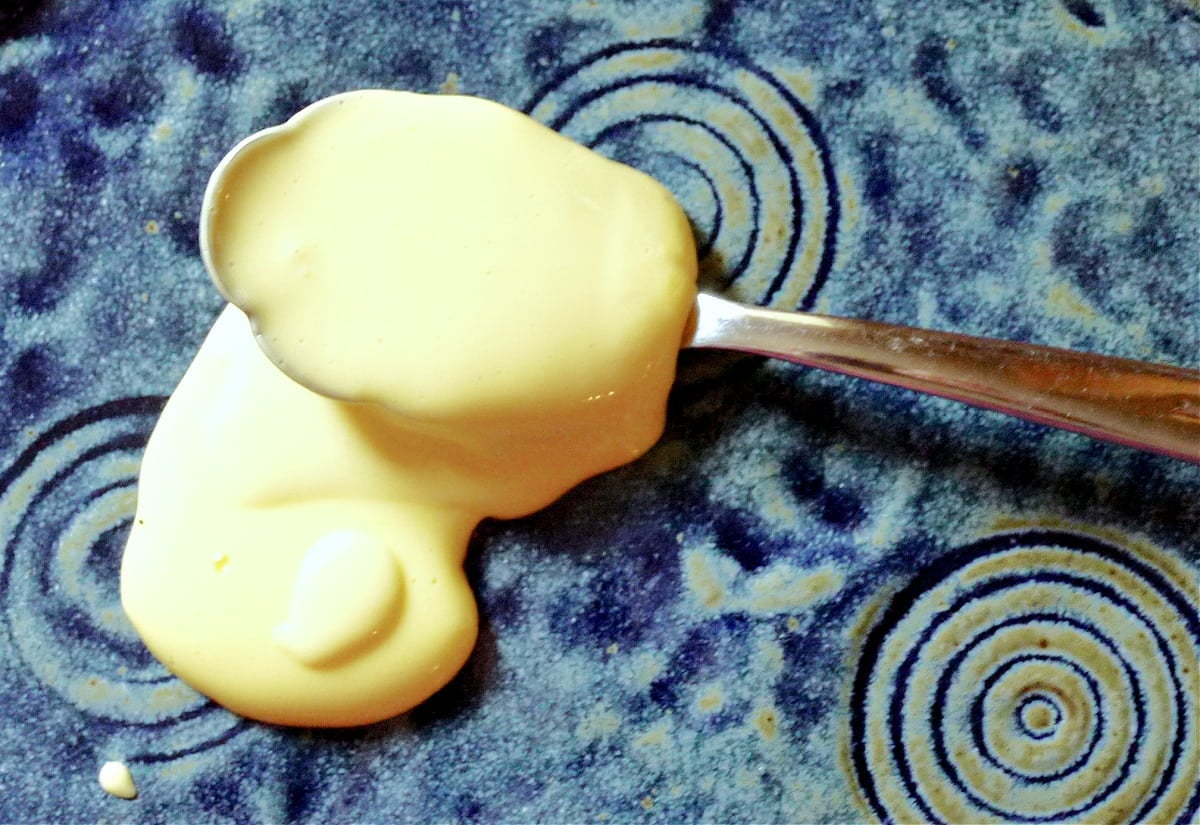
Pro Tips for Foolproof Hollandaise
- Use a tall container: A blender cup or mason jar keeps the sauce contained and makes blending easier.
- Don't rush the pour: Slowly streaming in butter helps the sauce thicken properly.
- Skip the microwave shortcut (if you can): Butter needs to be very hot - stovetop melting works best.
- Sauce too thick? Whisk in a teaspoon of warm water to loosen.
Common Mistakes to Avoid
Even a foolproof recipe can run into trouble if you're not careful. Here are the most common mistakes when making hollandaise with an immersion blender - and how to avoid them:
- Using cold egg yolks
- If your egg yolks are too cold, they can cool down the butter as you blend, making it harder for the sauce to emulsify smoothly. For best results, let the yolks come to room temperature before starting.
- Pouring the butter too quickly
- Adding hot butter too fast can prevent the sauce from emulsifying, causing it to separate.
- Tip: Stream the butter in very slowly while blending. Patience really pays off!
- Butter not hot enough
- If the butter isn't hot and foamy, the sauce won't thicken properly. Make sure it's bubbling when you add it to the yolks.
- Using a short or wide container
- A shallow bowl or wide pan can make it hard to get a stable emulsion with an immersion blender.
- Tip: Use a tall blender cup or mason jar to keep everything contained.
- Overheating the sauce after it's made
- Hollandaise is delicate - heating it above 150°F can cause it to break. Always warm gently or serve immediately.
- Skipping seasoning or tasting
- Even a quick hollandaise benefits from a final taste test. Add extra lemon, cayenne, or salt if needed for balance.
Following these simple tips will help you achieve creamy, silky hollandaise every time - no stress, no whisking marathons, just rich, buttery sauce ready in minutes.
Variations & Flavor Twists
While the classic 2-minute hollandaise is perfect on its own, a few minor adjustments can customize the flavor to match your meal:
- Citrus Variations: Swap some or all of the lemon juice for lime or orange juice for a bright, zesty twist.
- Mustard: Stir in ½ teaspoon Dijon or whole-grain mustard for a subtle kick and depth of flavor.
- Herb Infusions: Fresh herbs like tarragon, chives, or dill can be whisked in at the end to complement seafood, vegetables, or eggs.
- Spicy Hollandaise: Increase the cayenne or add a dash of hot sauce for a gentle heat that pairs beautifully with crab cakes, roasted asparagus, or eggs Benedict.
- Wine or Vinegar Touch: A splash of white wine can add sophistication for serving over grilled fish or chicken.
- Garlic or Shallot Flavor: For a savory twist, sauté minced garlic or shallots in the melted butter before blending.
Ways to Use Hollandaise Sauce
We all know Hollandaise Sauce is delicious over eggs Benedict, but it can elevate many other dishes from delicious to decadent as well. Try it over:
- Steamed asparagus, broccoli, or brussels sprouts
- Salmon or crab cakes
- Steak or roasted potatoes
- Artichokes or deviled eggs
Storage & Reheating
Hold - Freshly prepared hollandaise sauce can be kept warm over a double boiler until ready to serve. The best holding temperature is about 145°F (62°C). For food safety, hollandaise should not be held for more than two hours.
Refrigerate - Hollandaise is best served fresh, but leftovers can be refrigerated for up to 3 days.
Reheat - Hollandaise isn't always pretty when it's cold, but a gentle reheat will smooth it out:
- Microwave in 15-30 second bursts, stirring in between.
- Or, reheat in a bowl set over simmering water, whisking gently.
Leftovers - Extra hollandaise is especially delicious over:
- scrambled eggs
- toast
- seafood
- as a casserole sauce!
Pro Tip: Cold hollandaise - basically "butter-mayo" - makes a delicious spread for hot sandwiches! (Try it on a French dip for a new level of decadence!)
Egg Safety in Hollandaise Sauce
Because hollandaise is made with egg yolks, it's important to understand how to handle them safely. This method is generally considered safe: streaming boiling hot butter into the yolks as you blend raises their temperature quickly, leaving you with a velvety, cooked sauce rather than a raw one.
In my own kitchen tests, the finished hollandaise consistently reached an average of 142°F (62°C). While this is above the threshold where pasteurization begins, the sauce isn't held at that temperature long enough to be fully pasteurized. That means it should still be considered "lightly cooked."
Food safety depends on two things: the quality of the eggs you start with and the health of those who will be eating the sauce. For young children, pregnant individuals, older adults, or anyone with a weakened immune system, it's safest to use pasteurized eggs.
If you want to hold hollandaise warm for service, you can keep it in a double boiler at 140°F (60°C) for up to 2 hours. After the first hour at that temperature, the sauce will effectively be pasteurized. Keep in mind, hollandaise should be held warm - not hot - so it doesn't break.
A few important safety tips:
- Always use fresh, clean eggs with intact shells.
- Avoid contact between the raw egg contents and the outer shell.
- If in doubt, use pasteurized eggs.
- Never hold hollandaise longer than 2 hours.
As with all recipes using eggs, there is always some risk of food-borne illness. Taking these precautions will help you reduce the risk while still enjoying a classic, restaurant-quality sauce at home.
FAQs
No, and yes.
Hollandaise sauce can break in two ways. First, if the butter is too hot when it is added, the egg yolks can cook too fast, making your sauce into scrambled eggs. There is no fixing this kind of break.
The second kind of break is when the sauce separates. If this happens, whisk together one egg yolk and one tablespoon of water in a clean bowl over simmering water. Slowly pour the broken sauce into the egg yolk and water mixture, whisking constantly until the sauce has emulsified.
It's faster to set up and clean, works in small batches, and makes the sauce more stable.
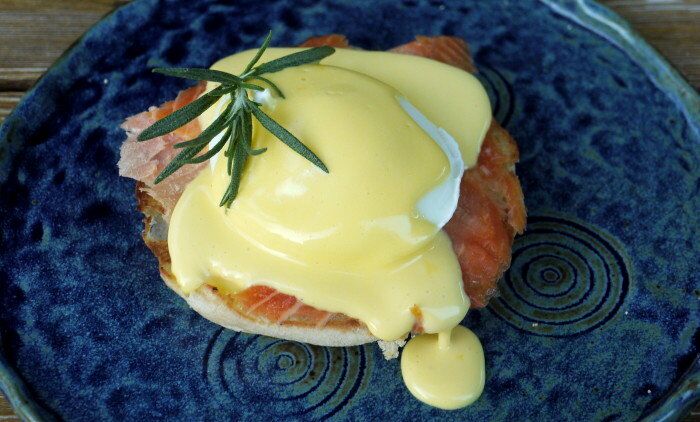
More French-Inspired Recipes
French recipes have a way of feeling both comforting and elegant. Warm up with a bowl of Classic French Onion Soup, then finish the meal with a timeless dessert like Crème Brûlée or a rustic Cherry Clafoutis - both surprisingly easy at home.
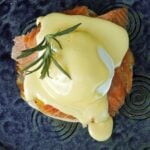
2- Minute Blender Hollandaise
Equipment
- 1 Blender
Ingredients
- 3 large eggs yolks room temperature
- 1 tablespoon lemon juice
- ⅛ teaspoon salt
- 1 pinch cayenne or a few drops of hot sauce
- ½ cup unsalted butter
Instructions
- Combine yolks & seasonings: Place egg yolks, lemon juice, salt, and cayenne in a tall blender cup or mason jar (wide enough for your immersion blender). Pulse the blender to until the mixture is creamy. Set aside briefly.
- Melt the butter: Heat butter in a small saucepan until bubbling and foamy (about 220°F | 104°C). The butter must be this hot to"cook" the eggs during the blending process. Carefully pour the hot,melted butter into a small glass measuring cup with a spout.
- Blend: Insert the immersion blender into the cup with the egg yolk mixture. Start blending, then begin s-l-o-w-l-y drizzling the hot butter into the cup a very thin stream while blending continuously. Patience is key!
- Taste & adjust: Add extra lemon juice, salt, cayenne or hot sauce to taste.
Notes
Nutrition
This website provides approximate nutrition information for convenience and as a courtesy only. You are solely responsible for ensuring that any nutritional information provided is accurate, complete, and useful.
Love it? Pin it! 📌
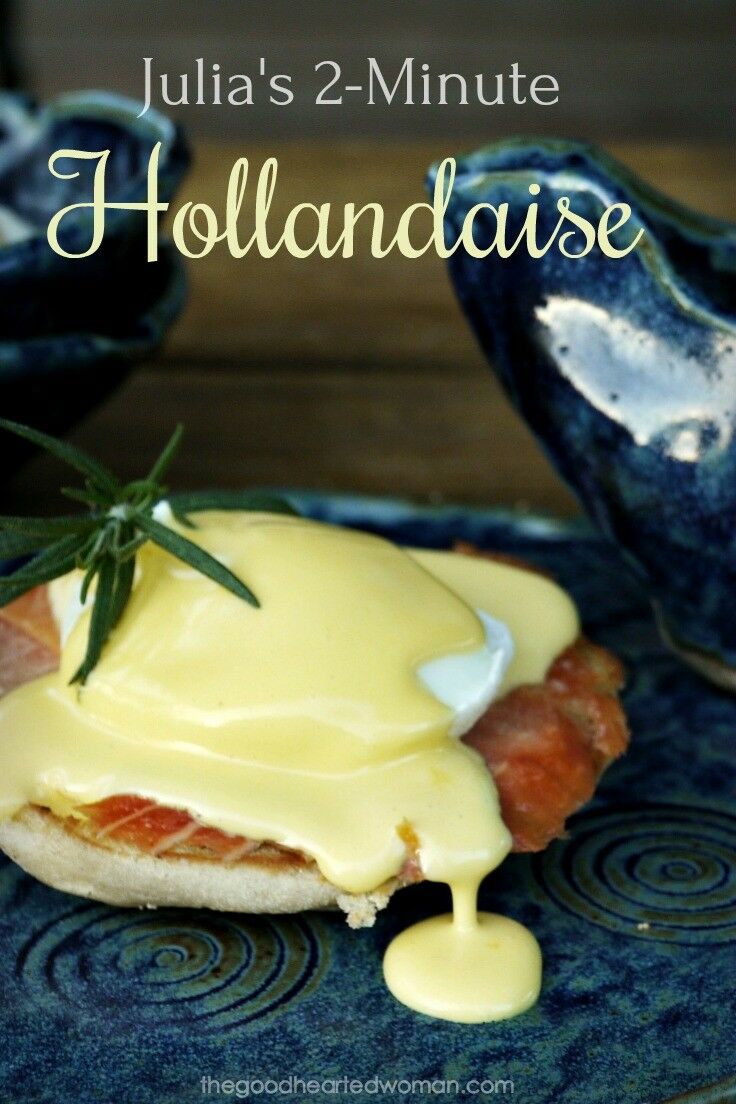
Did you like this recipe? Please leave a star ⭐️⭐️⭐️⭐️⭐️ rating below in the comments section! You can also stay in touch with us by following us on Pinterest, Facebook, and Instagram.




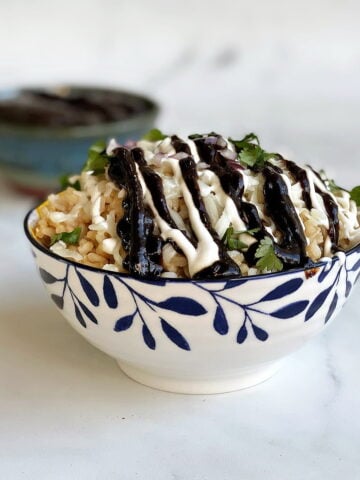
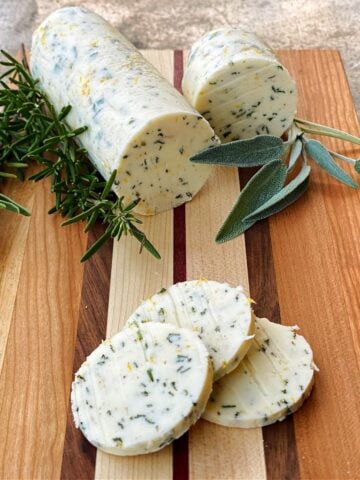
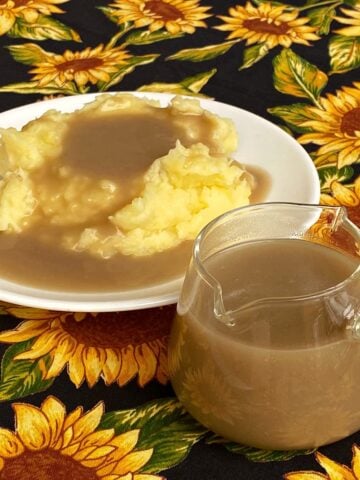
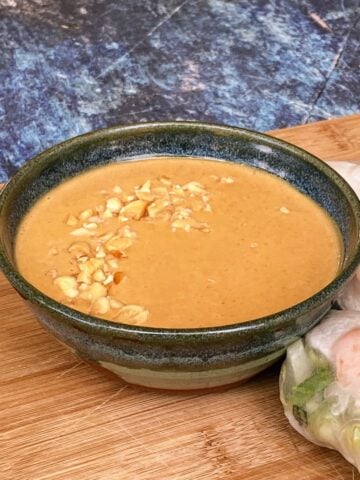
Marlynn [UrbanBlissLife] says
I just love your note at the end about eating uncooked eggs. I have to admit that I am a huge fan of Hollandaise sauce but haven't made it at home because I fear I'm going to somehow make it wrong and make myself (or others!) sick. Your post is empowering me to have the confidence to make it soon! Thank you!
Pech says
I've never made hollandaise at home - only had it at restaurants because my husband won't eat it, which means I'll be eating the whole batch!! This recipe seems so easy though if I ever have company and want to try making a fancy breakfast!
kelsey says
oh my goodness, i need to try this! i adore hollandaise but haven't been successful!
http://www.ladiesinnavy.com
Catherine says
Hollandaise is one thing I've never been able to get behind, alas. I do love a good Julia story though! (Have you read Julia Child Rules by local Portland writer Karen Karbo? I highly recommend it!)
Jenni says
I haven't braved Hollandaise yet... but, you make it look super easy. My husband LOVES poached egss and hollandaise sauce. I think I'll have to surprise him this weekend!
Renée ♥ says
It is really easy, Jenni. The trick is to have that butter very hot and then add it s-l-o-w-l-y. Do that and you can't fail!